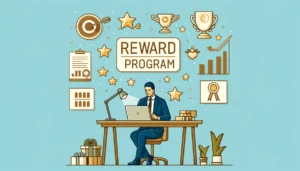HRD Roundtable Report: How to effectively embed DE&I into everyday practices?
- 6 Min Read
The business case for DE&I has been won, with almost all businesses not only seeing, but understanding the value. People managers hold the integral role of ensuring employees feel safe, seen, and heard, meaning it’s so important the hard work HR leaders do translate into value felt by all employees. How should we be measuring […]
- Event Types
- Date of Event: Oct 19, 2022


The business case for DE&I has been won, with almost all businesses not only seeing, but understanding the value. People managers hold the integral role of ensuring employees feel safe, seen, and heard, meaning it’s so important the hard work HR leaders do translate into value felt by all employees. How should we be measuring DE&I practices in terms of effectiveness? How can we ensure behaviors are changed for good? And what are the wider implications of not effectively embedding values and practices into your business that employees relate to?
On Wednesday 19th October 2022, HRD Connect hosted a group of senior HR and people leaders to discuss these questions in a virtual roundtable that was led by Katie Luu, Director of Diversity & Inclusion, at Xbox and supported by Amy Field, Senior Marketing Manager at Hive Learning. The group discussed how, for DE&I practices to effectively and impactfully reach every corner of a business, it requires and cultural and operational shift. The session was conducted under Chatham House rules so while this write-up will highlight key discussion points and takeaways, all participants are anonymized.
How difficult is it for companies to foster a sense of safety across an organization?
Katie opened the discussion by asking how the group is considering the concept of safety and its role in DE&I. One participant shared that the purpose and premise of DE&I must be at the top of the priority list every single day, with the DE&I lens being introduced into all workplace practices, from recruitment to promotions.
Companies regularly run interactive training sessions, that hold all the best intentions. But they require intentionality and integration to ensure critical conversations feed into the business as it’s those business-wide mini moments where trust and belonging show up. One participant shared that the balance between ensuring people managers continue to prioritize safety when business results need to be delivered is incredibly hard.
With authenticity in people leaders being so integral to building trust amongst their teams, how can we encourage them to grow in this area?
We each define trust in different ways, some think it’s earned, and others believe it should be given. People leaders need to understand the human condition and be aware of how each person defines trust. The group agreed that it’s the people leader’s role to open that conversation up with their team, and not make assumptions about psychological safety for the masses.
One roundtable participant highlighted the importance of not underestimating the power of having senior business leaders bring their full authentic selves to work. It can fundamentally change the culture, allowing people to feel safe to share the parts of themselves they wish, especially when those senior leaders are rewarded, rather than punished for doing so.
How important is it to tie rewards to the demonstration of behavior the businesses want to live by?
Whilst it is truly everyone’s responsibility to drive inclusive behaviors, creating inclusive leadership programs for new, prospected, and mature people managers are critical in driving the inclusive behaviors a business wants to see. But what are the critical behaviors of inclusive leaders and how do they tie into the business? For many of the individuals participating in the roundtable, their organizations require the demonstration of the right inclusive behaviors before they become people managers, and this is prioritized over having the right experience.
Additionally, for those individuals who are contributing a significant long-term impact on DE&I within a business, whether they sit in the HR or D&I function or not, they are given recognition within the business for their work. To drive such behaviors, it must go beyond simply attending ERG events, many organizations are ensuring sure requirements are included in objectives to drive the importance the business sees in such behaviors.
How do you know if DE&I practices are sticking?
Engagement surveys are the go-to measurement technique the group identified to understand if DE&I practices are sticking, with the questions used being tied to specific metrics on inclusive behaviors. One individual shared that they didn’t turn on comments within their engagement surveys, which they wished they had since the commentary alongside their numbers would have been instrumental. It was agreed that questions need to be phrased delicately, as they impact the outcome of the survey.
Interestingly, one HR participant explained how they look at how conversations are changing as a good indication of the impact of DE&I practices. For instance, if your leaders are putting the DE&I lens onto key business processes such as requesting to see a diverse collection of candidates during the recruitment process. It’s much harder to track however seeing people managers question HR on what they’re doing to be more inclusive is a tell-tale sign of a change in behaviors at the core.
When everyone owns a slice of the company culture, what role do internal champions and employees play in embedding DE&I practices?
Ultimately, the goal is to get everyone off the beach and into the water, then move everyone from the shallow end to the deep end. A challenge identified by a participant is that underrepresented groups gain the opportunity to share their thoughts, whereas the silent majority often tend not to speak up for fear of saying the wrong thing. This participant explained that to counteract this, they have run safe space training sessions where those within the majority can share but also learn something new, in an environment where they feel safe to do so.
As the discussion ended, Katie highlighted the key takeaways from the conversation. She placed importance on the concept that it’s a journey, where change happens but often at a slow and steady pace. It’s the responsibility of everyone to be intentional, and aware of the small moments that happen that build up a culture, through the day-in-day-out consistency to see progress. Whilst everyone is responsible, it’s the people manager’s role to get everyone into the water but should never assume everyone knows how to swim.








